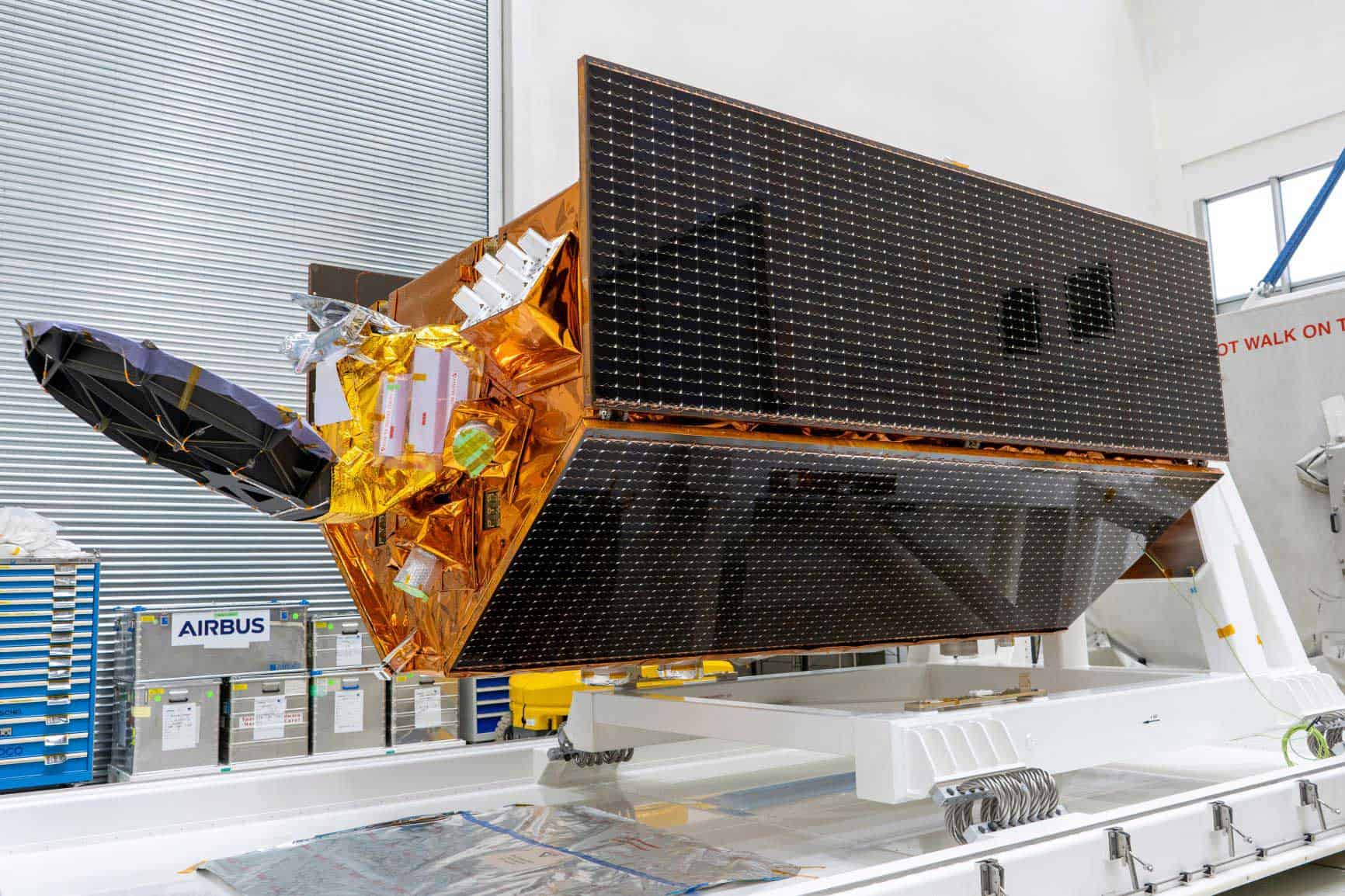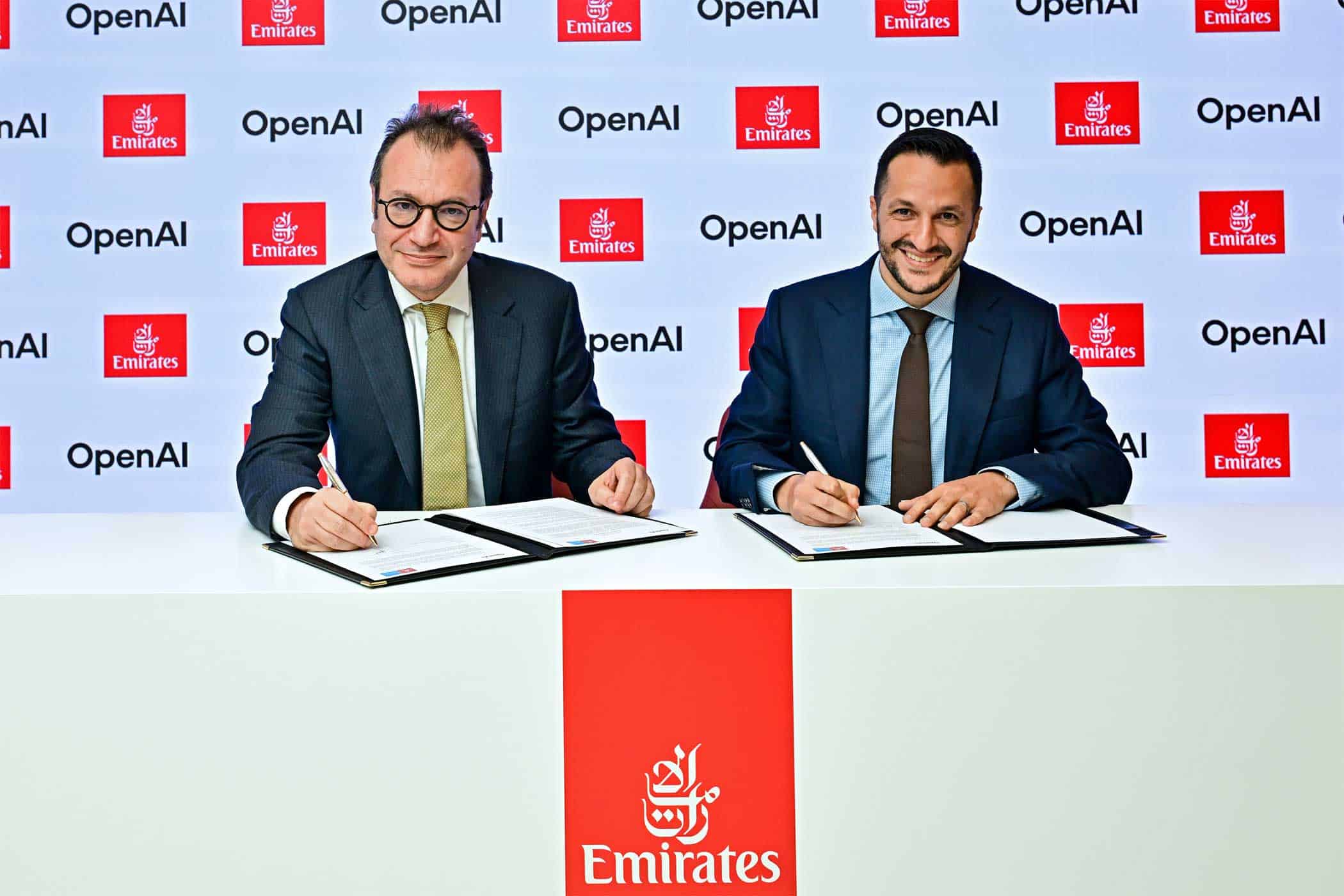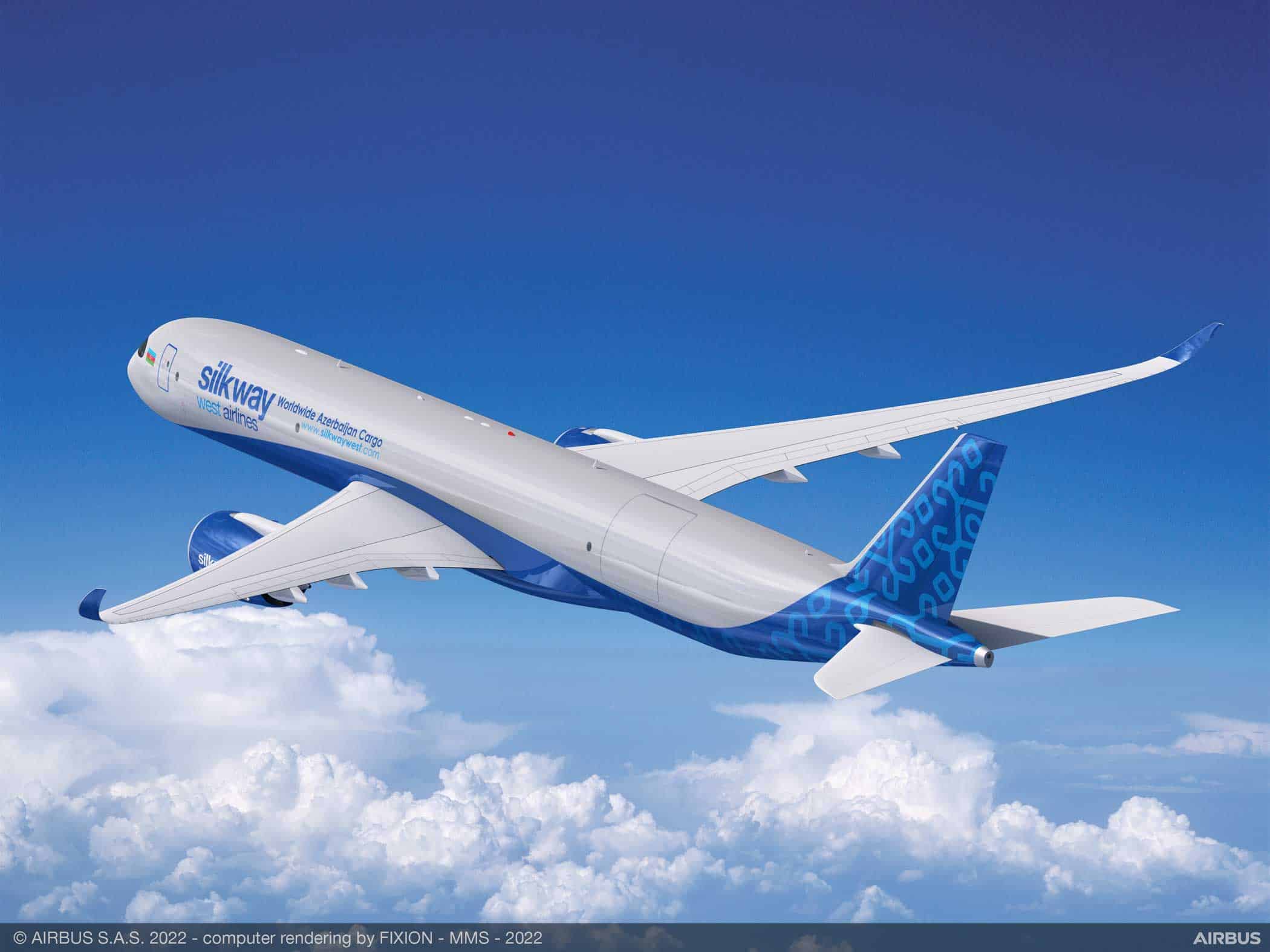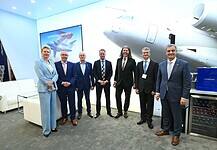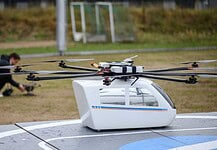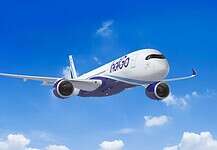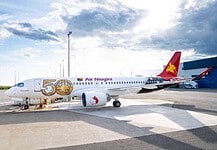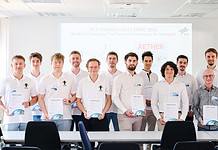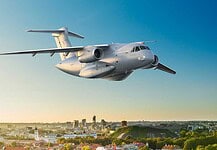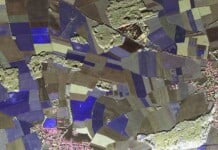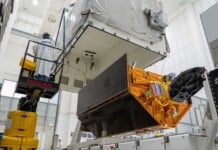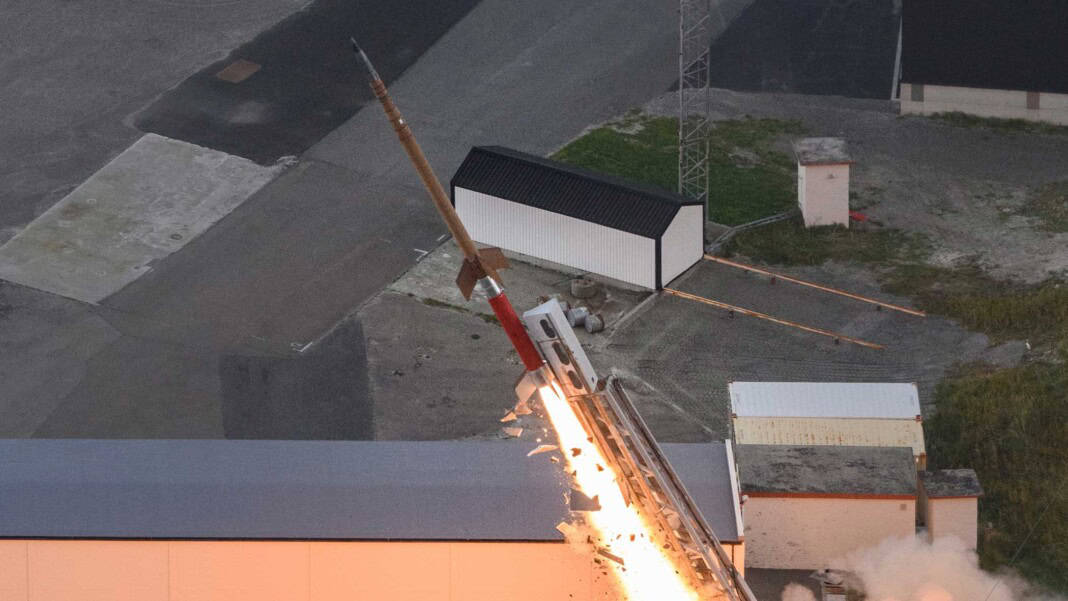
This site is also available on:
Deutsch
Introducing the future of reusable space technologies
The space industry is at the beginning of a new era in which the reuse of spacecraft components is becoming increasingly important. The goal is to significantly increase the economic efficiency of space transportation vehicles through multiple uses and, at the same time, to use resources more efficiently. The German Aerospace Center (DLR) plays a key role in this by developing cutting-edge technologies and testing them through sounding rocket flight experiments. One of these projects is the ATHEAt project, which set a significant milestone in hypersonic flight research on October 6, 2025. The experiment reached speeds exceeding Mach 9 and thus temperatures of more than 2,000 degrees Celsius, conditions similar to those of re-entry into the Earth‘s atmosphere. This process yielded essential measurement data that is crucial for the further development of aerodynamic and aerothermodynamic technologies as well as for the improvement of heat protection systems.
The ATHEAt flight experiment: structure and scientific objectives
The technical implementation of the ATHEAt flight experiment was carried out by a 13.5-meter-long sounding rocket with two propulsion stages, developed specifically for this project by the DLR team at the Mobile Rocket Base (MORABA). The first stage, “RED KITE,” is a powerful solid-fuel engine developed in collaboration with Bayern-Chemie, while the second stage is powered by a Canadian “Black Brant” rocket motor. This combination enabled a long-duration flight with high Mach numbers at a relatively low altitude – ideal for investigating the extreme conditions at hypersonic speeds.
The sounding rocket carried a complex scientific payload in the forward section, which included numerous sensors. Over 300 sensors, including infrared cameras, laser scanners, and radiation thermometers, were installed to record aerothermal loads. A modular data acquisition system developed by DLR transmitted the real-time data wirelessly to the ground stations of DLR and Andøya Space. The large-area sensor network enabled precise analysis of the flight parameters and temperature distributions. Of particular note are the movable flaps made of fiber-reinforced ceramic, which were flown on a lower body for the first time. These flaps are crucial for future spacecraft control technologies, as they enable aerodynamic adjustments under extreme conditions.
Importance of fiber-reinforced ceramics and cooling technologies
A central component of the experiment is the use of a self-developed fiber-reinforced ceramic on the missile’s forebody. This material is characterized by a combination of exceptional thermal resilience, mechanical stability, and low weight. Its ability to withstand temperatures exceeding 2,000 degrees Celsius and the resulting aerothermal influences makes the ceramic particularly suitable as a material for heat protection systems for reusable space transportation systems.
During the ATHEAt flight, two cooling experiments were also conducted to investigate how active cooling systems can be integrated and optimized on such surfaces. Since cooling at high reentry velocities represents an immense challenge, these findings form the basis for innovative approaches to temperature management. The movable flaps also serve as aerodynamic control surfaces, even under extreme heat conditions, which is of great importance for the controllability of future spacecraft.
Advances in aerodynamics, aerothermodynamics and re-entry
One of the most complex aspects of developing reusable space transportation systems is overcoming the aerothermodynamic challenges of re-entry into the Earth’s atmosphere. DLR focuses on specifically closing technology gaps that have emerged worldwide by combining flight experiments like ATHEAt with numerical simulations, detailed design, and ground component testing. This integrative approach is a strategic core of German space research.
The reentry phase is characterized by its dramatic aerodynamic changes and extreme temperatures, which require highly resilient materials and innovative cooling technologies. Tests at hypersonic flight speeds, such as those in the ATHEAt project, allow these conditions to be simulated in a realistic manner. This makes a significant contribution to improving the design of heat protection systems and adapting them to the requirements of innovative space transportation vehicles. They also provide important insights into the control capabilities of these systems, which can be specifically supported by movable, heat-resistant flaps.
The role of MORABA and the Andøya Space launch site
The realization of such complex flight experiments requires not only innovative hardware but also extensive expertise in planning, support, and launch. DLR maintains MORABA, a specialized unit focused on conducting suborbital sounding rocket missions and drawing on several decades of experience. MORABA not only managed the design and integration of the two-stage launch vehicle but was also responsible for mission planning and in-flight monitoring.
For the launch of the ATHEAt rocket, the company collaborated with Andøya Space in Norway, a highly advanced launch site offering optimal geographical and logistical conditions for high-altitude, hypersonic research flights. The combination of MORABA’s long-standing expertise and Andøya Space’s technical infrastructure ensured a smooth launch and a safe and scientifically successful mission.
Conclusion: Future-proof space travel through innovative experiments
The ATHEAt flight experiment marks a significant advance in the development of modern space technologies. By providing in-depth insights into aerothermodynamic phenomena at high Mach numbers and temperatures above 2,000 degrees Celsius, the project provides valuable data that advances the development of reusable space transportation systems. The extensive measurements, the specially developed data acquisition system, and the innovative material and control concepts make it possible to sustainably address key challenges in the reusability and controllability of spacecraft.
In particular, the successful integration of the fiber-reinforced ceramic and the movable flaps under extreme loads demonstrates the potential of materials research and aerodynamic control. This makes the ATHEAt experiment a prime example of the effective integration of basic research, applied technology development, and practical testing.
Combined with the capabilities of modern simulation technologies and the valuable infrastructure of the DLR Mobile Rocket Base and the strategic location of Andøya Space, the project provides the foundation for future space systems that are not only technically powerful but also more economically and ecologically sustainable. The insights gained will have an impact far beyond the ATHEAt project and strengthen the competitiveness of the space industry in an international context.
The experiment thus represents an important building block for achieving the ambitious goals of the next generation of space travel in terms of reusability, safety and efficiency – in the spirit of sustainable and future-proof space technology.

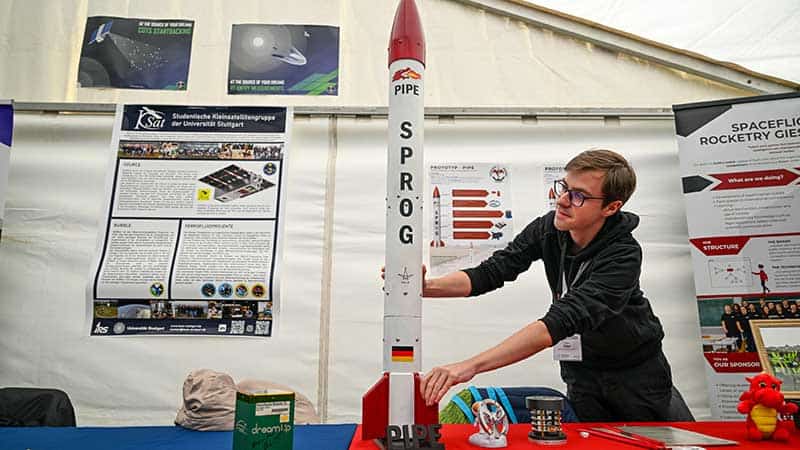 Wacken Open Air: Interstellar meeting place for space enthusiasts (Wacken Open Air: Interstellar meeting place for space enthusiasts)
Wacken Open Air: Interstellar meeting place for space enthusiasts (Wacken Open Air: Interstellar meeting place for space enthusiasts) Strong Martian winds and dust devils: Insights thanks to deep learning and camera technology (Strong Martian winds and dust devils: Insights thanks to deep learning and camera technology)
Strong Martian winds and dust devils: Insights thanks to deep learning and camera technology (Strong Martian winds and dust devils: Insights thanks to deep learning and camera technology)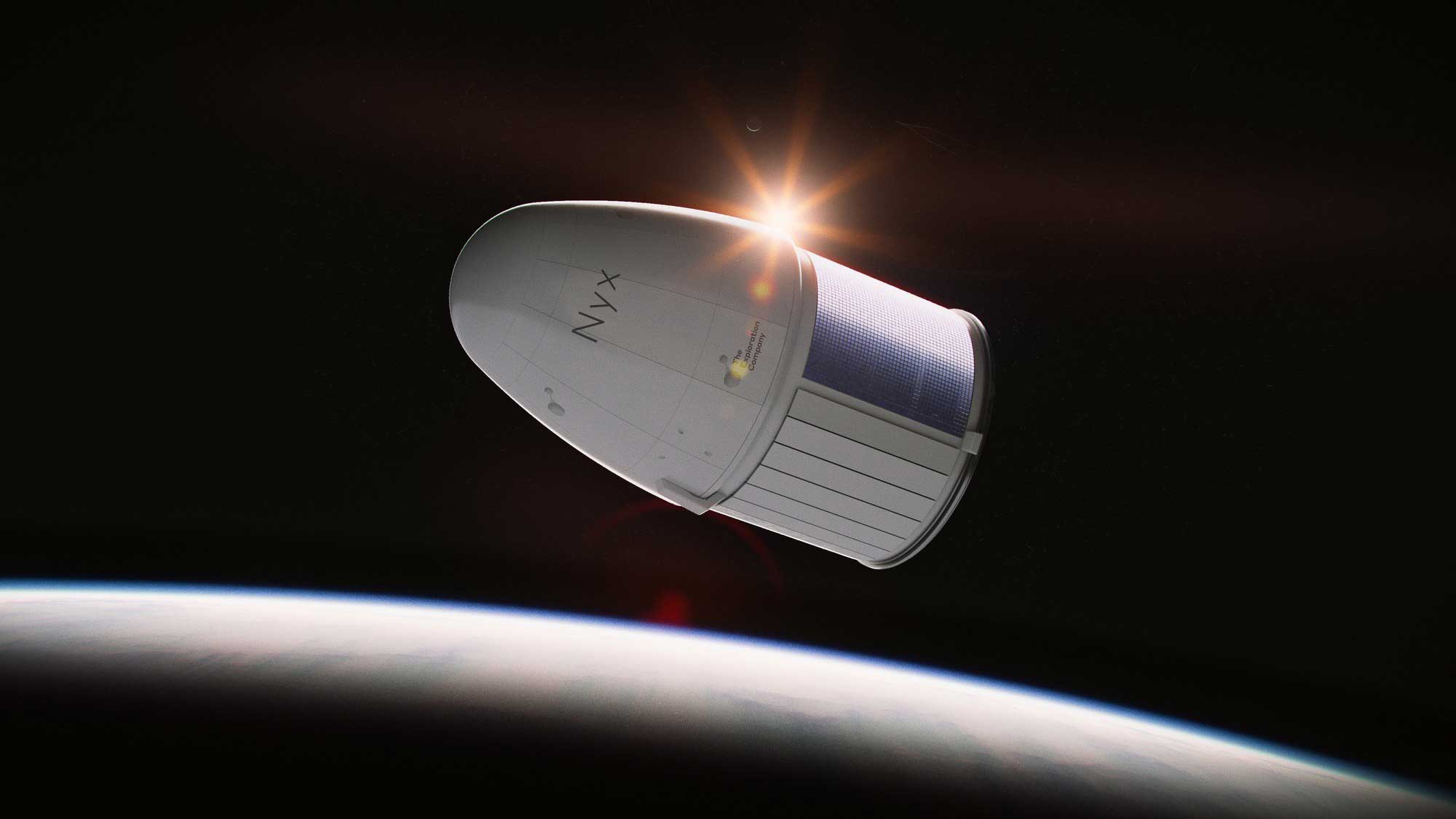 Space research: DLR buys flights on the “Nyx” space capsule (Space research: DLR buys flights on the “Nyx” space capsule)
Space research: DLR buys flights on the “Nyx” space capsule (Space research: DLR buys flights on the “Nyx” space capsule) Safety in orbit: DLR & Bundeswehr use Uedem Space Situational Awareness Center (Safety in orbit: DLR & Bundeswehr use Uedem Space Situational Awareness Center)
Safety in orbit: DLR & Bundeswehr use Uedem Space Situational Awareness Center (Safety in orbit: DLR & Bundeswehr use Uedem Space Situational Awareness Center)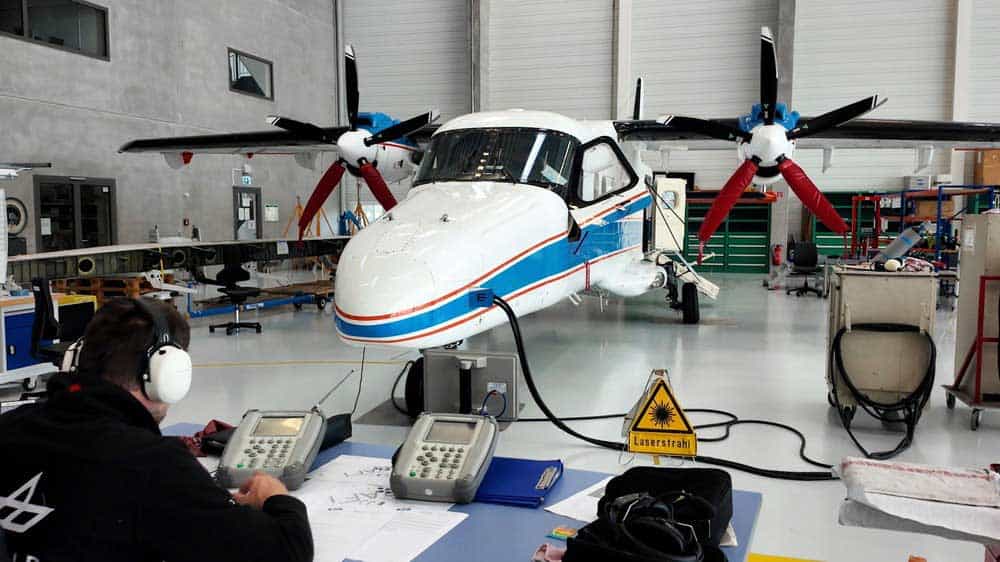 Quantum communication: From aircraft to ground stations and the quantum internet (Quantum communication: From aircraft to ground stations and the quantum internet)
Quantum communication: From aircraft to ground stations and the quantum internet (Quantum communication: From aircraft to ground stations and the quantum internet) NRW, ESA and DLR expand SpaceHub Cologne (NRW, ESA and DLR expand SpaceHub Cologne)
NRW, ESA and DLR expand SpaceHub Cologne (NRW, ESA and DLR expand SpaceHub Cologne)
